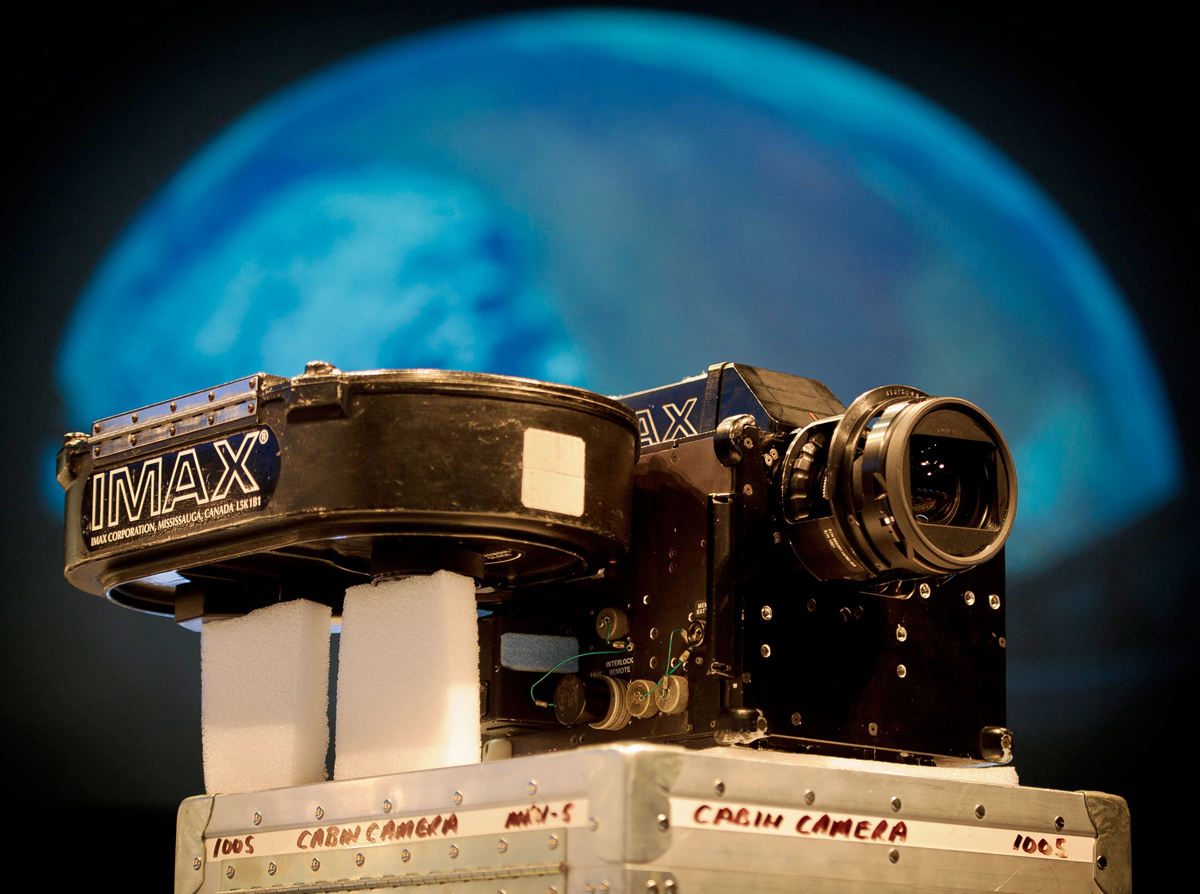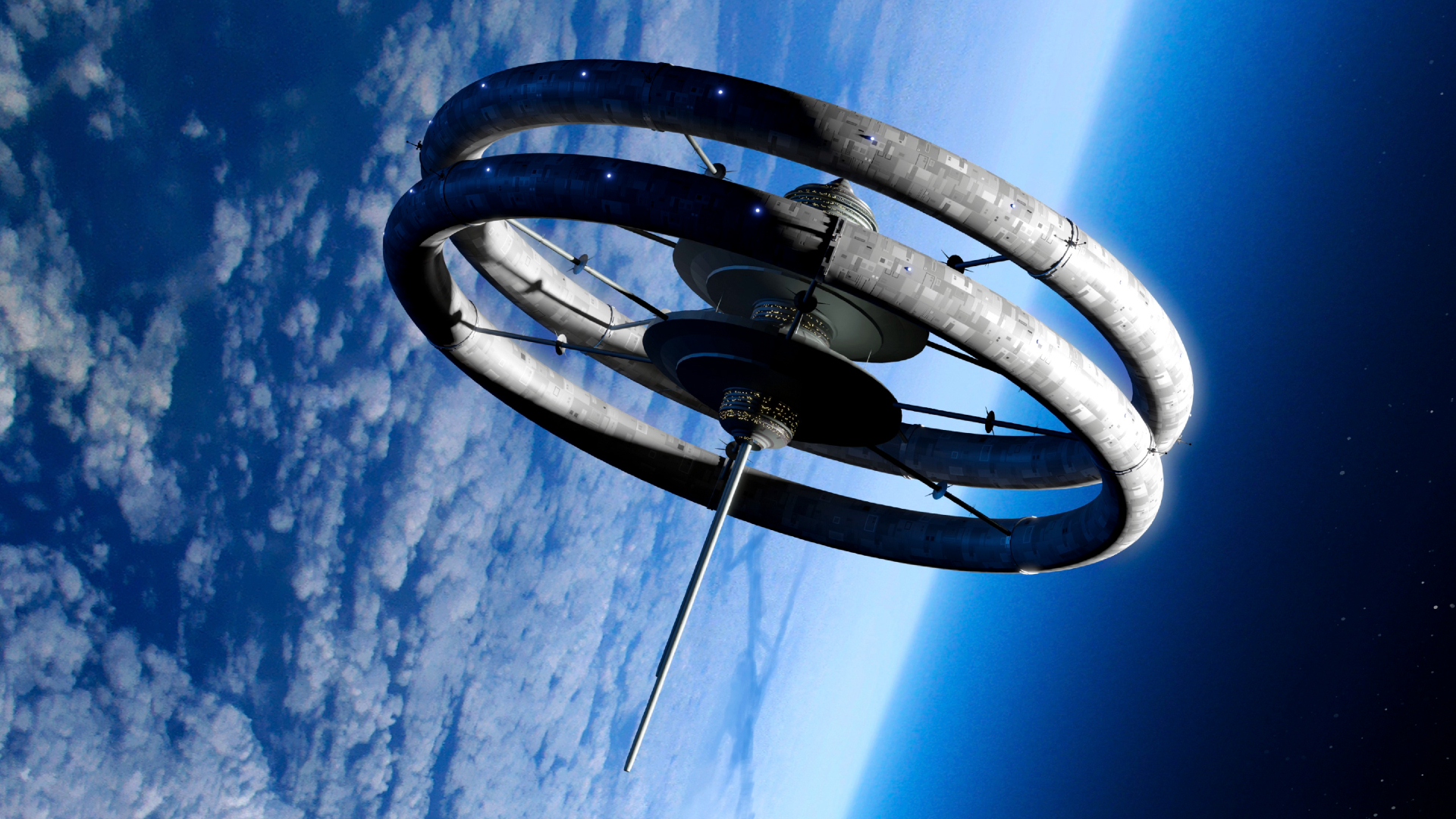IMAX Space Cameras Donated to Smithsonian

Two large-format motion picture cameras that gave the public the opportunity to see and experience what astronauts saw flying on board the space shuttle are now part of the Smithsonian's collection.
On Wednesday (April 4), the IMAX Corporation donated its two space-flown two-dimensional cameras to the National Air and Space Museum in Washington, D.C. The cameras, which captured the scenes for six IMAX movies including "The Dream is Alive," "Blue Planet," and "Mission to Mir," were carried aboard 17 shuttle missions between 1984 and 1998.
"Receiving this donation of flown-in-space cameras from IMAX brings a story from the museum's history full circle." said Jennifer Levasseur, museum specialist in the division of space history. "The museum partnered with IMAX and Lockheed Martin in 1983 to create early space films such as 'The Dream Is Alive' to increase public understanding of spaceflight through large-format films."
Now, the museum will preserve and soon display these cameras to educate and inspire future generations, said Levausser in a statement.
The National Air and Space Museum hosted a screening of the 1985 movie, "The Dream is Alive," on Wednesday, followed by a donation ceremony with the IMAX cameras' co-inventor Graeme Ferguson, director and producer Toni Myers, and former astronaut cameraman Bill Readdy.
Myers, who headed all of IMAX's space films, including the two recent three-dimensional movies "Space Station 3D" and "Hubble 3D," said the 2D cameras represent a "unique little chunk of spaceflight history."
"I say unique as I think it is pretty special that something like that could happen, whereby we could actually go train astronauts to be our ambassadors here on Earth to go into zero gravity and space and take us where we couldn't go," Myers told collectSPACE.com in an interview. [Most Memorable Shuttle Missions]
Breaking space news, the latest updates on rocket launches, skywatching events and more!
Max and Icky-Bicky
The two donated cameras filmed both interior and exterior scenes in space, flying in different areas of the orbiters.
"IMAX donated to us all of the equipment that they had maintained rights to after they flew on the space shuttle," Levasseur told collectSPACE. "The primary IMAX pieces are the cameras themselves: the two dimensional in-cabin camera that the astronaut crews operated by hand and the payload bay camera that was operated by the astronauts remotely. It was always situated in the payload bay of the shuttle."
The in-cabin camera will be placed in the shuttle-devoted "Moving Beyond Earth" gallery, inside a full-scale mockup of the orbiters' crew compartment's mid-deck.
The cargo bay camera will be exhibited alongside the soon to arrive space shuttle Discovery at the museum's Steven F. Udvar-Hazy Center in northern Virginia.
"There's a camera in a case out there that is coming out for display in another exhibit and I'm hoping the payload bay camera can just take its place in that display case," Levasseur said.
Both of the cameras have nicknames that were given to them during their 14 years of spaceflight service.
"The cabin camera was called 'Max,'" Myers recalled. "I've forgotten who first called it Max but they said it was like having a great big dog along on a mission. Its presence was there. Some crews started calling it Max and it just stuck."
"The IMAX cargo bay camera, its acronym ICBC, became known as 'Icky-Bicky,' just from reading it off the page," Myers said. [9 Weird Things That Flew on NASA Shuttles]
Focal point for the shuttle era
It is not a coincidence that the camera donation coincided with the end of the shuttle program. Although IMAX has gone on to use 3D cameras, it was the completion last year of the 30 year NASA program that drove the timing of the cameras' accession into the national collection.
"Because they were partners in the making of these films that documented the early shuttle era, it just seemed to make sense to everyone that it be a part of the exhibit," Myers said, referring in part to the April 17 arrival of space shuttle Discovery. "It was not just us deciding they could have the cameras. It just seemed like absolutely the right thing to do."
According to Levasseur, the scenes that the two cameras captured brought the shuttle program into focus.
"Looking back on the Apollo [moon landing] program, the Hasselblad camera is 'the' camera, the focal point for the photography and the way in which we understand images of that era. I think the IMAX camera holds a similar place in the shuttle era," Levasseur said.
"I think it is much more difficult for people to identify still photographs from particular shuttle missions as there were so many more missions and so many more astronauts involved," she added. "I think the IMAX films are actually probably one of the focal points for how people understand the space shuttle era. They are so big and they have so much impact on you, almost physically, when sitting in an IMAX theater."
As such, according to Levasseur, the cameras are "really key pieces" for the museum, especially in the context of the last 30 years of human spaceflight.
Continue reading at collectSPACE.com to learn the future of IMAX cameras in space.
Follow collectSPACE on Facebook and Twitter @collectSPACE and editor Robert Pearlman @robertpearlman. Copyright 2012 collectSPACE.com. All rights reserved.

Robert Pearlman is a space historian, journalist and the founder and editor of collectSPACE.com, a daily news publication and community devoted to space history with a particular focus on how and where space exploration intersects with pop culture. Pearlman is also a contributing writer for Space.com and co-author of "Space Stations: The Art, Science, and Reality of Working in Space” published by Smithsonian Books in 2018.
In 2009, he was inducted into the U.S. Space Camp Hall of Fame in Huntsville, Alabama. In 2021, he was honored by the American Astronautical Society with the Ordway Award for Sustained Excellence in Spaceflight History. In 2023, the National Space Club Florida Committee recognized Pearlman with the Kolcum News and Communications Award for excellence in telling the space story along the Space Coast and throughout the world.

